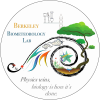Reports
Contents
| Title: | Mayberry - NDVI (SRS, Planet) | ||||||||||||||||||||||
| Date: | 2017-06-06 - 2021-04-15 | ||||||||||||||||||||||
| Data File: | MB_NDVI.csv | ||||||||||||||||||||||
| Refers to: | MB,2046503376,2046503354 | ||||||||||||||||||||||
|
Various sensors measuring NDVI have been installed across the Delta sites over the last several years. At some sites, the SRS sensors from Decagon/METER have been drifting low, so I wanted to compare them with other NDVI measurements.
For some sites with I also compared GCC with the various NDVI values to see how much GCC values varied year over year. Photos were taken by a variety of cameras: Netcam Stardot cameras (the official camera of the Phenocam Network®), Canon point-and-shoot cameras with custom firmware, or a Raspberry Pi camera. I used Joe's datafetch tool to calculate daily average mid-day values of NDVI and GCC from the various sensors. Mid-day values included data from 11:00 to 13:00, 5 values a day. I despiked the data in Excel.
See reports for other Delta sites here: East Pond / Sherman Wetland Temp Tower (both sites had same set of SRS sensors) Twitchell Alfalfa / Sherman Barn (both sites had same set of SRS sensors) Â
ÂFigure 1. Time series of NDVI data at Mayberry. SRS values do not have any obvious decay, although it has NDVI values that are consistently about 0.3 lower than PL or broadband NDVI. Â Figure 2. Time series of individual SRS bands. Seasonal maxes seem reasonable; no obvious decay. Â Figure 3. Red reflectance. SRS has a consistently higher red reflectance than PL reflectance. Maybe SRS reflectance is increasing year after year. Â Figure 4. NIR reflectance. Very similar magnitude for SRS and PL data. Â
Figure 5. NDVI linear regression. PL and broadband NDVI have similar fits with R2 from 0.85 to 0.87.  Figure 6. Mayberry GCC data compared with SRS data. GCC_13-15 is the average GCC from 13:00 to 15:00, and GCC_11-13 is the average GCC from 11:00 to 13:00. They both match well with the SRS NDVI data over the last 4 years, although GCC seems to peak in June/July while the SRS NDVI seems to peak a little later in September. Â
Figure 7. NDVI-GCC regression with GCC 11:00-13:00. R2 ranges from 0.64 to 0.78; PL has the best fit with R2=0.78. Â Figure 8. NDVI-GCC regression with GCC 13:00-15:00. All 3 NDVI series have similar R2 values (ranging from 0.77 to 0.80; PL has the best fit with R2=0.80). There is a larger difference than I expected in R2 between the sets of GCC data. GCC_13-15 has more points at the upper end of the GCC range (and it also has more points overall), which may explain its higher R2 value |
|||||||||||||||||||||||
| |

